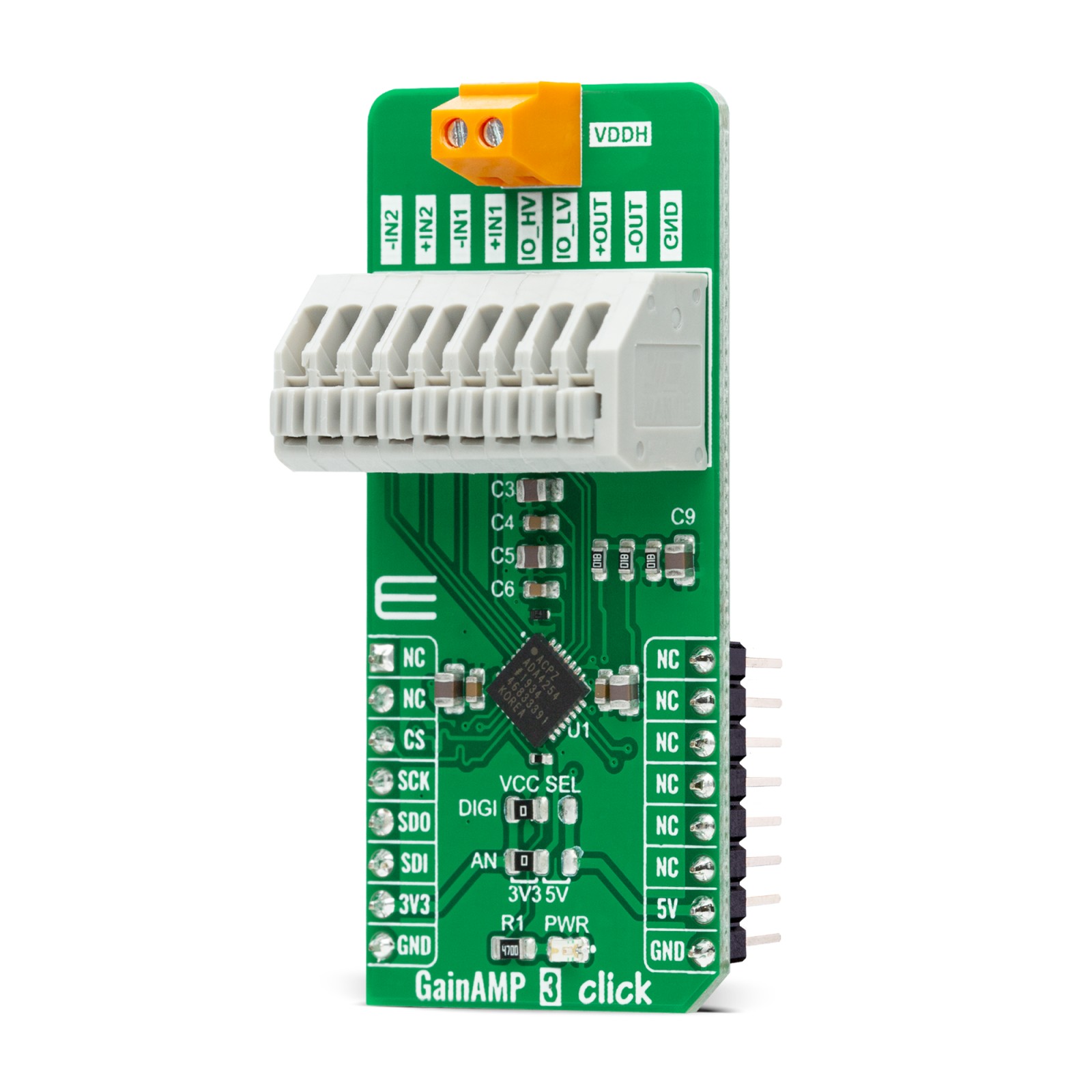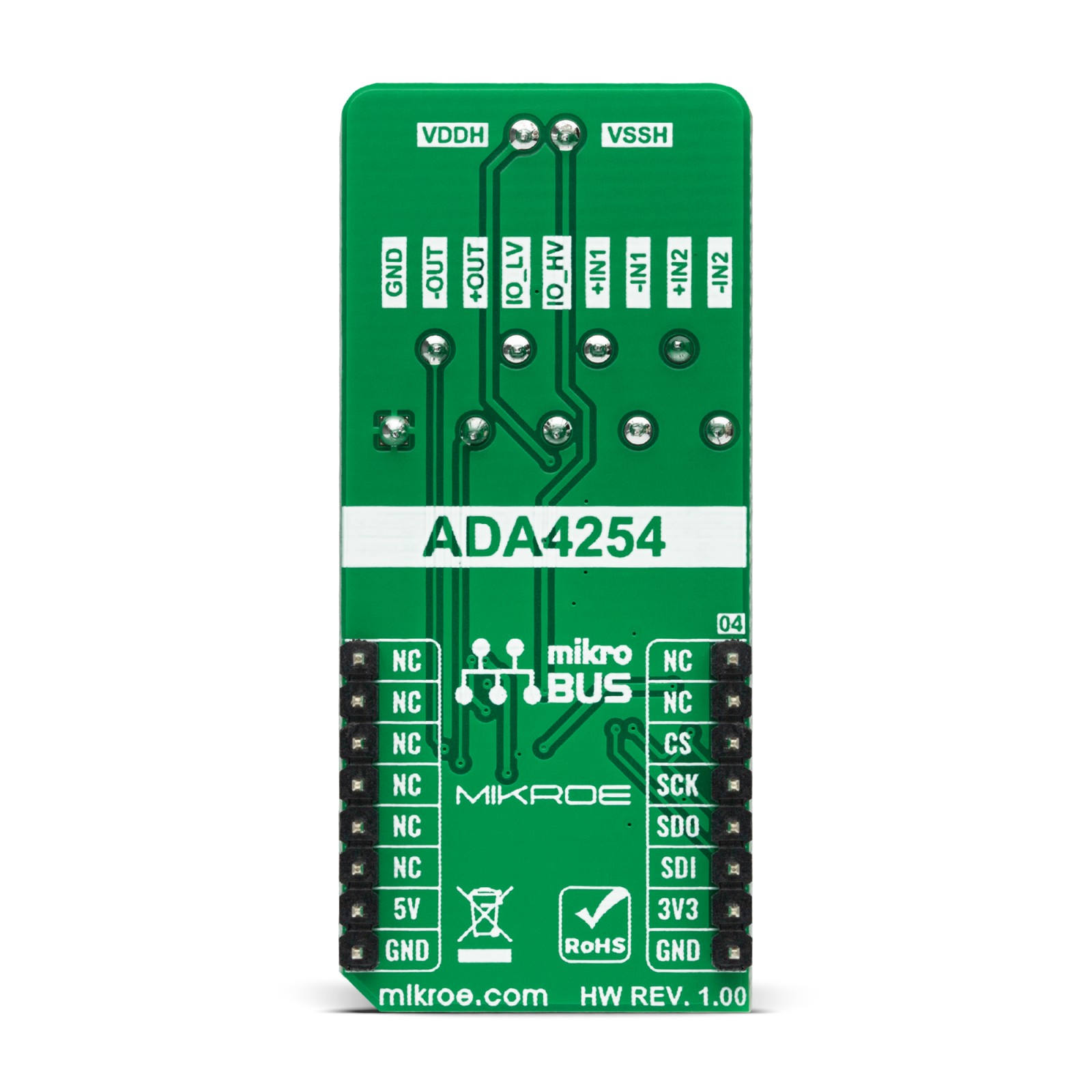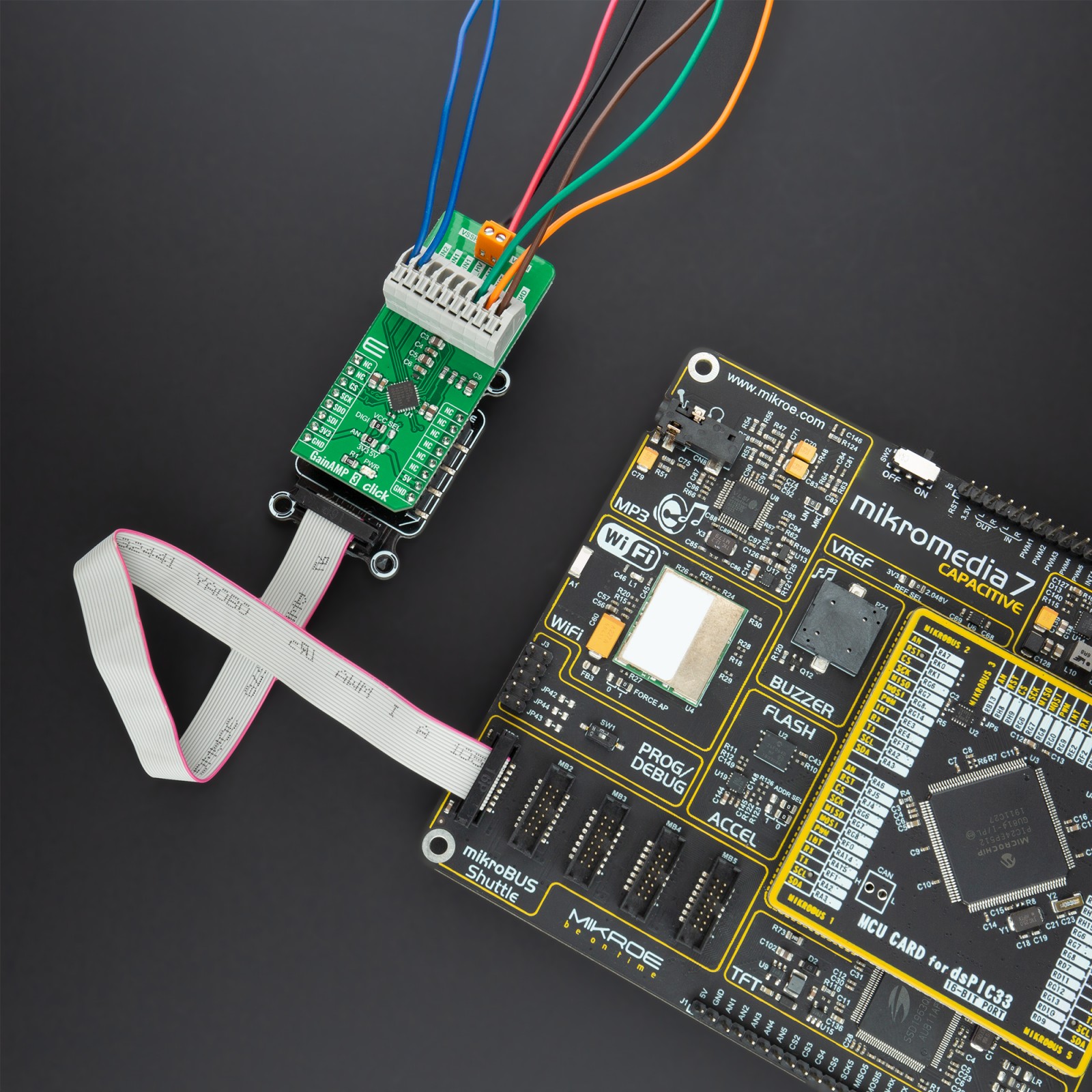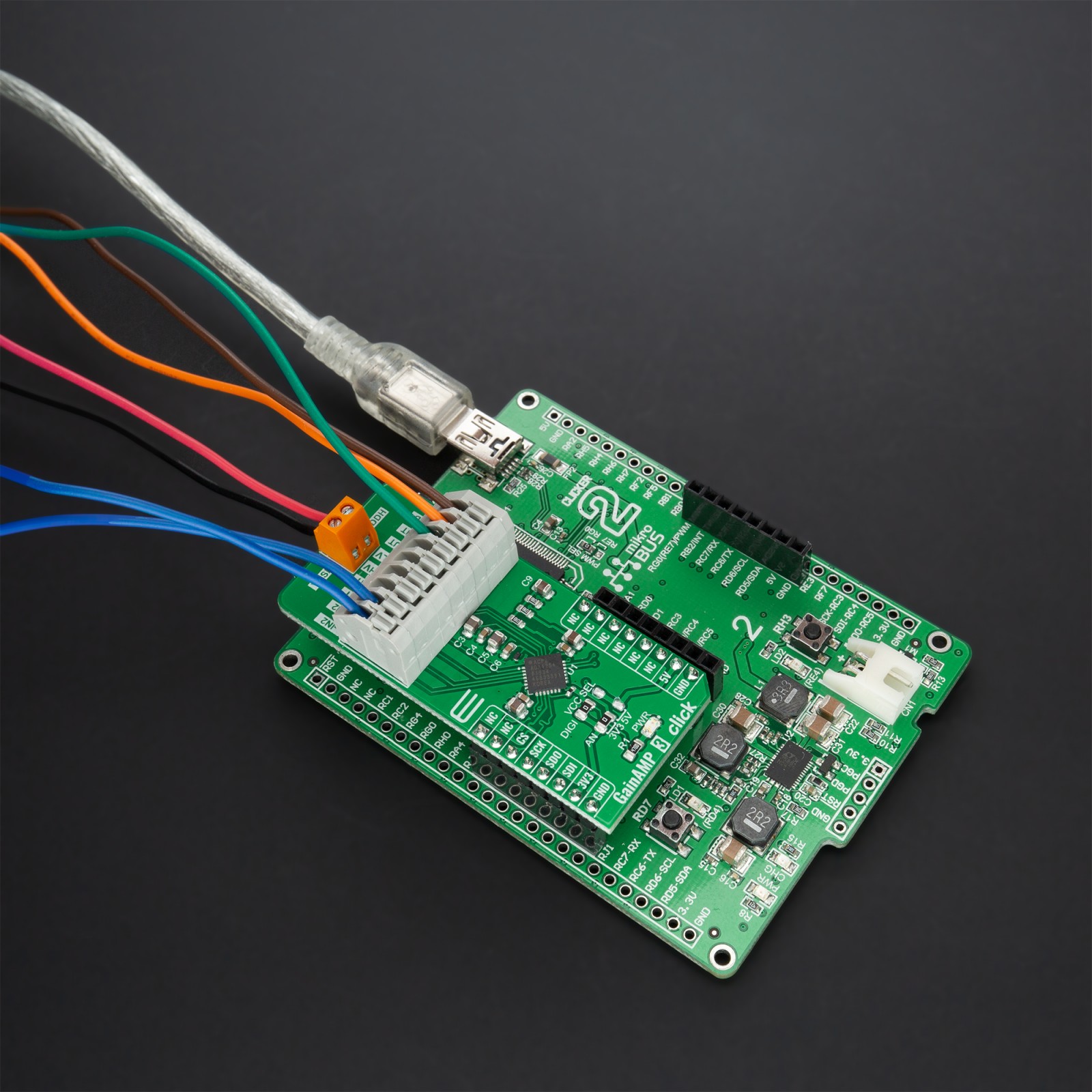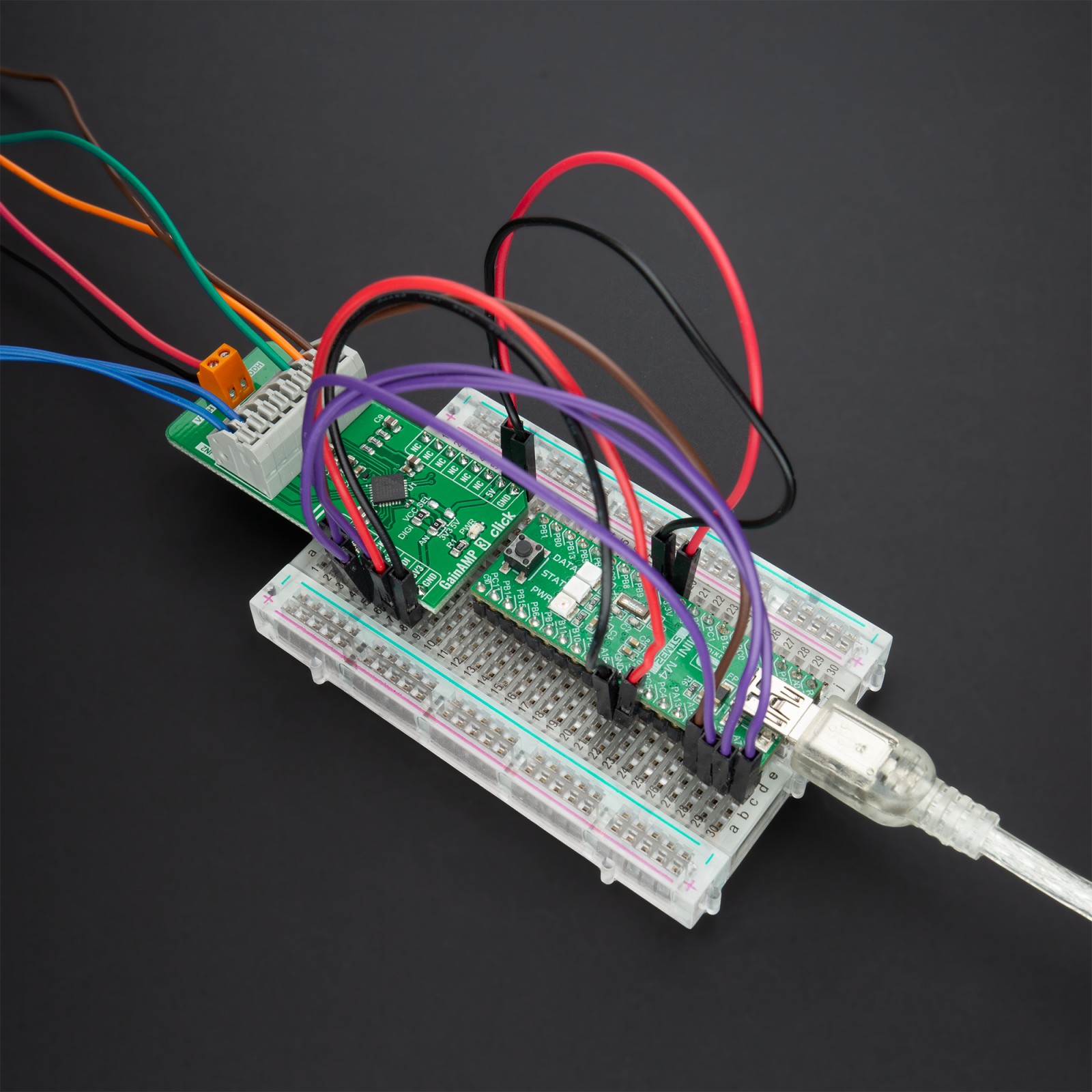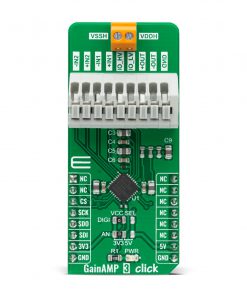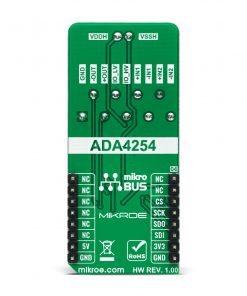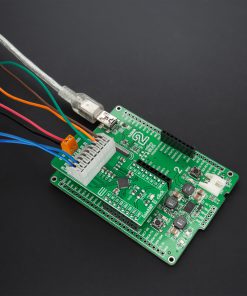GainAMP 3 Click
R555.00 ex. VAT
GainAMP 3 Click is a compact add-on board that contains a 4-channel programmable gain amplifier. This board features the ADA4254, a zero drift, high voltage, programmable gain instrumentation amplifier from Analog Devices. It features 12 binary weighted gains and three scaling gain options resulting in 36 possible gain settings. It comes with an input multiplexer providing ±60V protection to the high impedance inputs of the amplifier and an excitation current source output available to bias sensors such as resistance temperature detectors (RTDs). The ADA4254 zero-drift amplifier topology self-calibrates DC errors and low-frequency noise, achieving excellent DC precision over the entire specified temperature range, maximizing dynamic range, and significantly reducing calibration requirements in many applications. This Click board™ represents a perfect choice for industrial systems and process control that demand precision, robustness, and low power, thanks to its low power consumption.
GainAMP 3 Click is supported by a mikroSDK compliant library, which includes functions that simplify software development. This Click board™ comes as a fully tested product, ready to be used on a system equipped with the mikroBUS™ socket.
Stock: Lead-time applicable.
| 5+ | R527.25 |
| 10+ | R499.50 |
| 15+ | R471.75 |
| 20+ | R453.99 |


